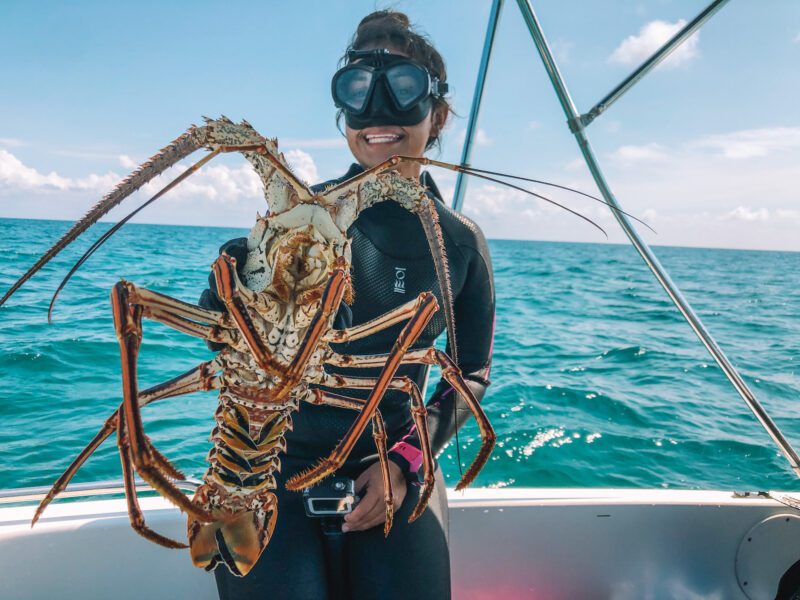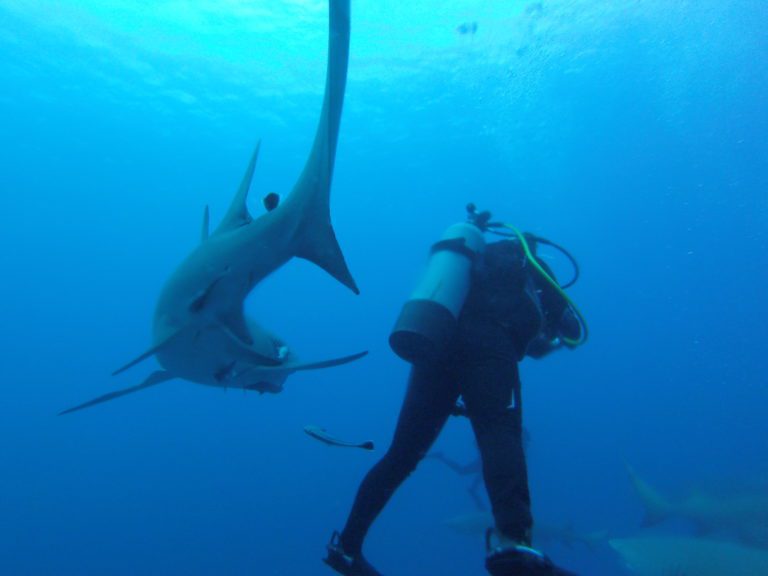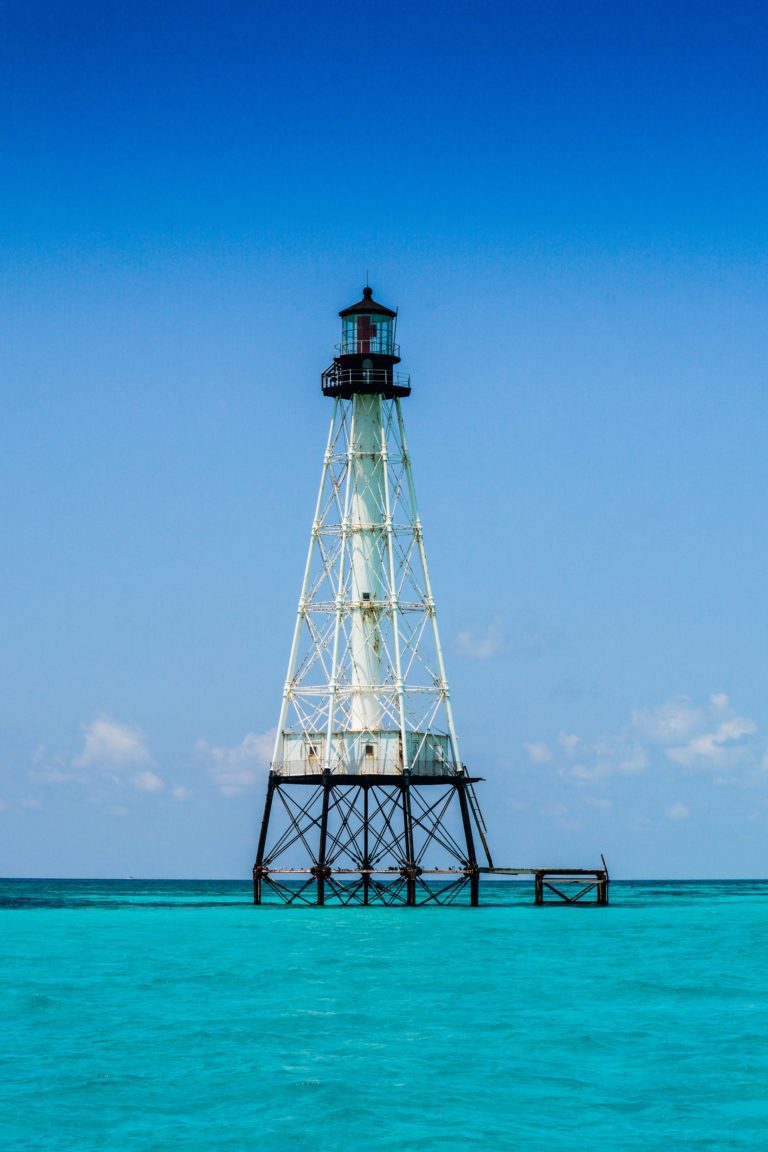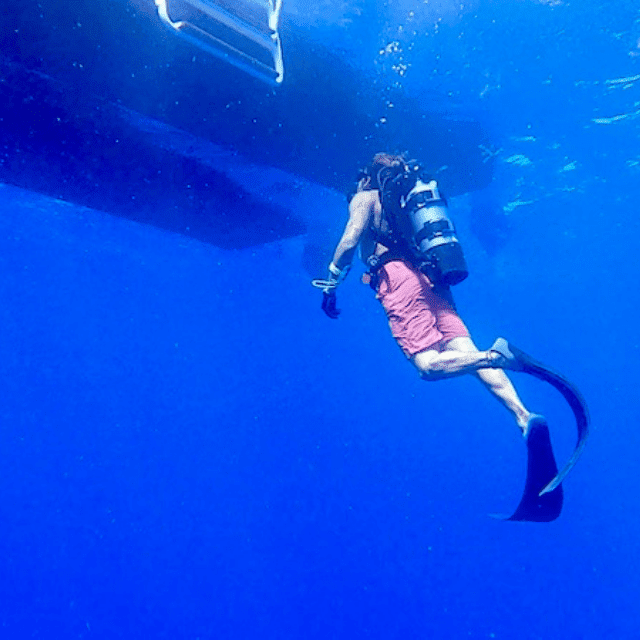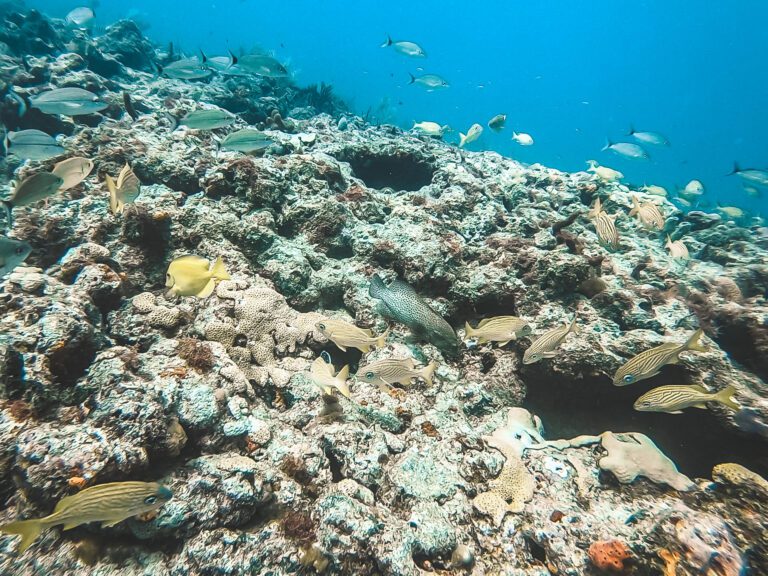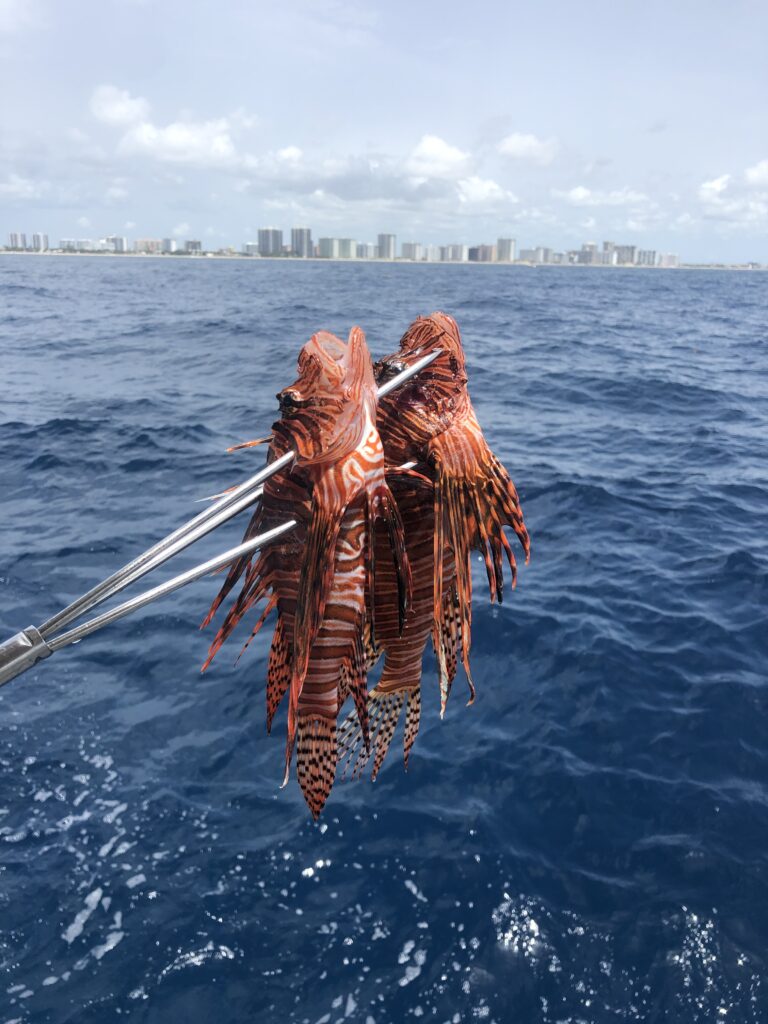How to Catch Spiny Lobster in Florida
Spiny lobster season is upon us and divers are gearing up to get their hands on the tasty ocean critter. This year, learn how to catch spiny lobster in Florida so you’re not missing out on all the fun!

Every year between the months of August and March a frenzy occurs at dive sites all around Florida – and not in a bad way. Divers are gearing up to dive down for their next delectable dinner. A true treat from the sea. And one of the most popular seafood dishes in the world.
It’s lobster season, baby!
It’s all the rave and we don’t want you to miss out! Admittedly, it’s a scary activity to start by yourself, especially if you don’t have anyone to explicitly show you! We certainly understand that because we were in your shoes at one point.
That’s why we created this step by step guide just for you. So if you’re new to hunting lobster or you’ve never tried before, you’re in the right place!
The rest of this article discusses how to measure legally and three different methods to catch spiny lobster in Florida while diving (scuba or free). By the end, you’ll know just how to catch spiny lobster in Florida in the safest and most efficient way possible!
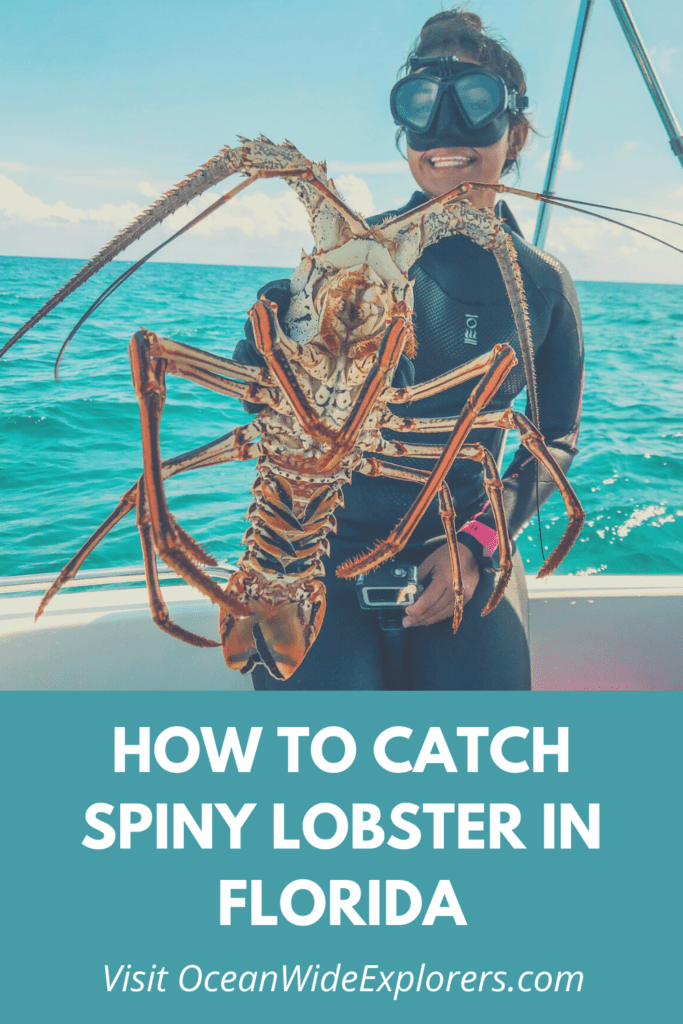
How to Measure a Spiny Lobster
In Florida, a legal lobster length is 3 inches. And no, thats not from nose to tail. It’s 3 inches of carapace length.
car·a·pace
the hard upper shell of a turtle, crustacean, or arachnid.
Oxford Dictionary
Lobster fall into the crustacean category. In other words, the lobster’s carapace is the body armor around its torso. Its hard outer shell just behind the eyes and just before the tail.
And those are the exact points you measure from. Just between the eyes where the hard shell begins and just behind the tail. If your measuring tool doesn’t fall off at the end of carapace, you’re good. If it does, best let that lobster free.
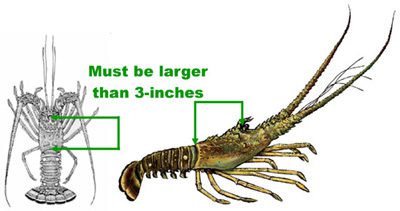
Ensuring legality
When catching spiny lobster in Florida, you are legally required to measure underwater before you bring the lobster to the surface. Failure to do so can result in some hefty fines.
Other considerations are:
- It’s lobster season.
- You’ve purchased a lobster permit through the FWC.
- The lobster has no eggs on its underside.
- Carapace length is at least 3 inches in length.
Amongst other requirements. For the full list of rules and regulations, visit the FWC’s Spiny Lobster page before you hunt!
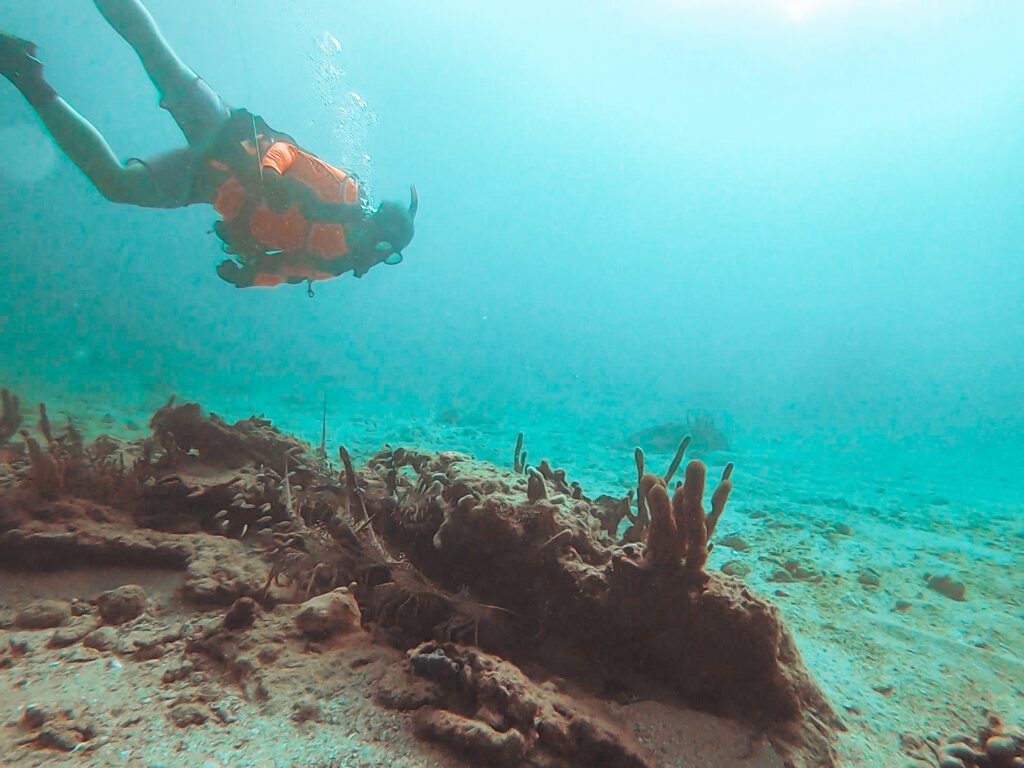
How to Catch Spiny Lobster While Diving
Not all methods are created equal and which one works for you is entirely dependent on the person. However, we certainly do have our favorites. That’s why we’re here to share various methods with you while also giving you our honest opinions on what works best for us.
Catching Spiny Lobster With Your Bare Hands
We’ve seen it. We’ve done it. But we don’t recommend it.
It’s possible to catch lobster with your bare hands (well, with gloves I should say), but it’s extremely difficult. You need to be lightning fast and in good position to not spook the thing before you can snag it.
Honestly, the only reason you’ll be catching lobster with your hands is if you see one and you forgot the necessary lobster gear. Or you simply want to challenge your hunting prowess (which I totally understand that sentiment).
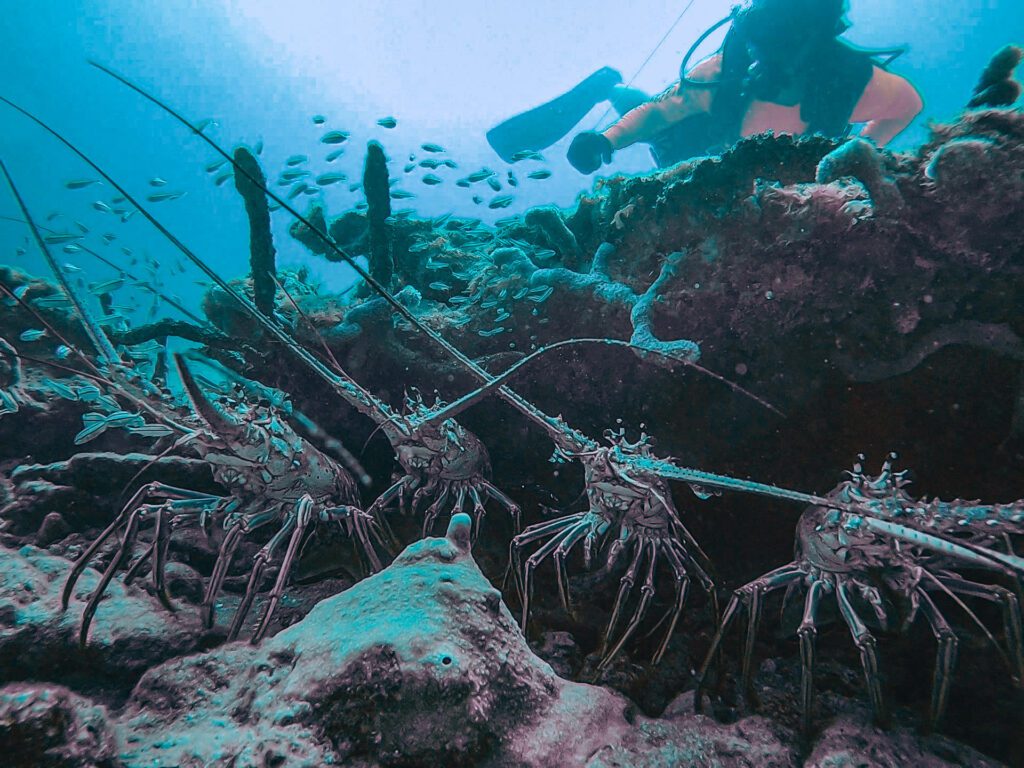
How to do it
- Identify your prey. It’s difficult to catch spiny lobster with your bare hands during the day as they hide under rocks and ledges. Try at night, they’re usually walking around.
- Once you spot a lobster creeping about, sneak up behind it approaching towards its tail.
- Don’t make any sudden movements as you approach.
- Position your hands near the tail and once you’re a few inches away, swipe and snag.
- Grip the lobster as you measure the carapace and check for eggs to ensure a legal catch.
- Bag your lobster and repeat!
Pros:
- Minimal gear required.
- You look like a total badass if you’re successful.
Cons:
- High chance of failure.
- You look like a total idiot if unsuccessful.
Required Gear
Catching Spiny Lobster With a Snare
I tend to see divers using a snare more often than anything else. And I still don’t entirely understand why.
It’s a good method and I’ve seen people have a lot of success. But for me? I’ve never found it highly effective. There’s too much precision involved for an act that ought to be swift and smooth. But to each their own.
That’s not to say you won’t have success with this method. You should certainly give it a try. Like I said, I often see highly successful hunts from divers using a snare.
What is a snare?
Snares are used to entrap unsuspecting animals in a noose-like fashion. The snare will be set, the animal will unknowingly enter and become entangled with a suffocating end result. It’s a gruesome act when you think about it but it’s been around for as long as humans have been hunting.
A lobster snare works slightly differently. Meaning, you don’t entrap the lobster to suffocate it. Rather, you loop the snare around its tail! This binds the lobster in place making escape unattainable.
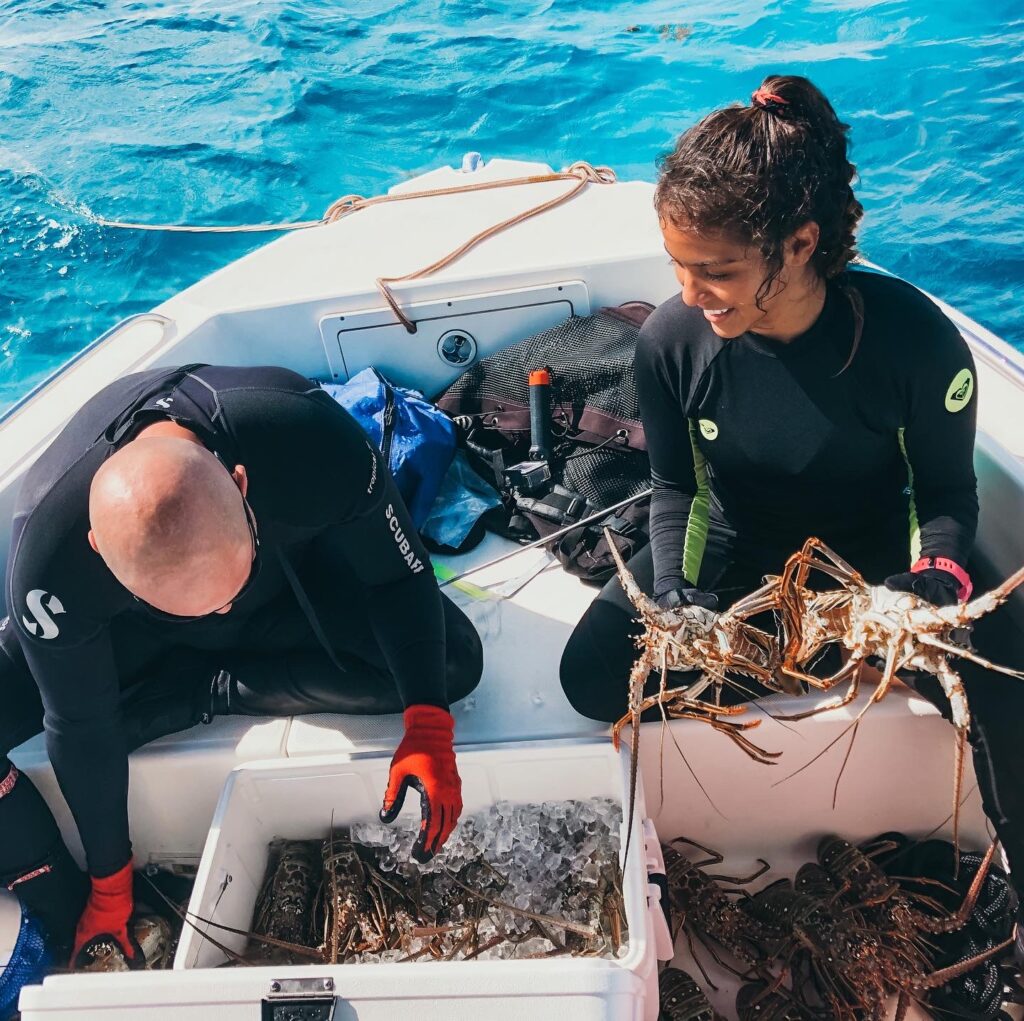
How to do it
- Identify your prey. Snares are best used to get lobster out of deep cracks and crevices. A good hunting tool for day time lobster dives.
- Extend the snare beyond the lobster near the tail. Slowly approaching the lobster head on is actually a good bet as the crustacean will back into your snare.
- When the lobster’s tail enters into the snare, yank the snare shut. Hopefully, you’ll snag right where the carapace meets the tail.
- Measure the lobster, check for eggs and keep your legal catch!
- Bag your dinner and repeat!
Pros:
- Better reach into cracks, crevices, caves, and other tight spaces.
- Minimal gear as you just need to carry the snare and lobster bag.
Cons:
- More precision involved.
- Requires a swift and timely pull, making escape for the lobster more likely if you’re not quick enough.
- If you accidentally catch a pregnant lobster, the snare can severely damage the eggs.
Required Gear
Tickle Stick and Net
A tickle stick and net is our preferred method of catching spiny lobster in Florida. We have high success rates, low stress on the surrounding environment, and a grand ole time along the way.
For whatever reason, we just find the whole process easier. I don’t need to be as precise like a snare, I don’t need to be as quick, and the large net gives me a margin of error that’s difficult to miss.
Just check out the textbook form done below from our good friend, Mike:
How to do it
- Identify your prey. Per our usual arrangement.
- If the lobster is hiding under a ledge, reach your tickle stick inside and behind the lobster.
- Give the lobster a few lite taps on the booty. Agitated and perceiving threat from behind, the lobster should move forward and out of the rock ledge.
- Slowly creep your net behind the lobster. If the lobster attempts to escape, it’ll flick its tail and fling backwards – right into your net.
- If the lobster is still calm, simply rest your net atop and snatch with your hand. You should have a fistful of net AND lobster.
- Check for eggs and measure the tail while it’s in the net.
- Bag and repeat. Easy – peasy.
Pros:
- Larger margin of error.
- Easier to catch lobster at night when they’re walking around.
- If you accidentally catch a pregnant lobster, your chance of damaging any eggs is greatly reduced compared to a snare.
- Less precision necessary.
Cons:
- More equipment is needed for this tactic.
- A lobster net isn’t exactly streamlined.
- Your net may fall on and over coral, potentially damaging the environment. (Use extreme caution and know your surroundings)
Required Gear
How to Catch Spiny Lobster in Florida: Final Thoughts
Methods to catch spiny lobster go beyond these three. Folks are known to catch lobster commercially, driving around on a boat, and even sending their dog in to fetch lobster from the bottom. The possibilities seem endless.
However, these are our three favorite and the ones we see used most often. Again, our favorite method is using the net and tickle stick. We highly recommend starting there.
As for after your catch, it’s time to clean, cook, and enjoy! Have fun!
Enjoy this Post? Pin it!

Read More About Hunting and Diving
We hope you enjoyed our post on how to catch spiny lobster in Florida. Hopefully you’ll find it useful on your next adventure! Here are a few more ocean-loving articles we think you should read next:
- Becoming the Predator: Are Instincts Why We Hunt Lionfish?
- Hunting Lionfish: Everything You Need to Know
- Guide to Freediving in Fort Lauderdale Beach
- 8 Reasons You Should Start Hunting Lionfish
Do you have any questions about catching spiny lobster? Let us know in a comment below!

